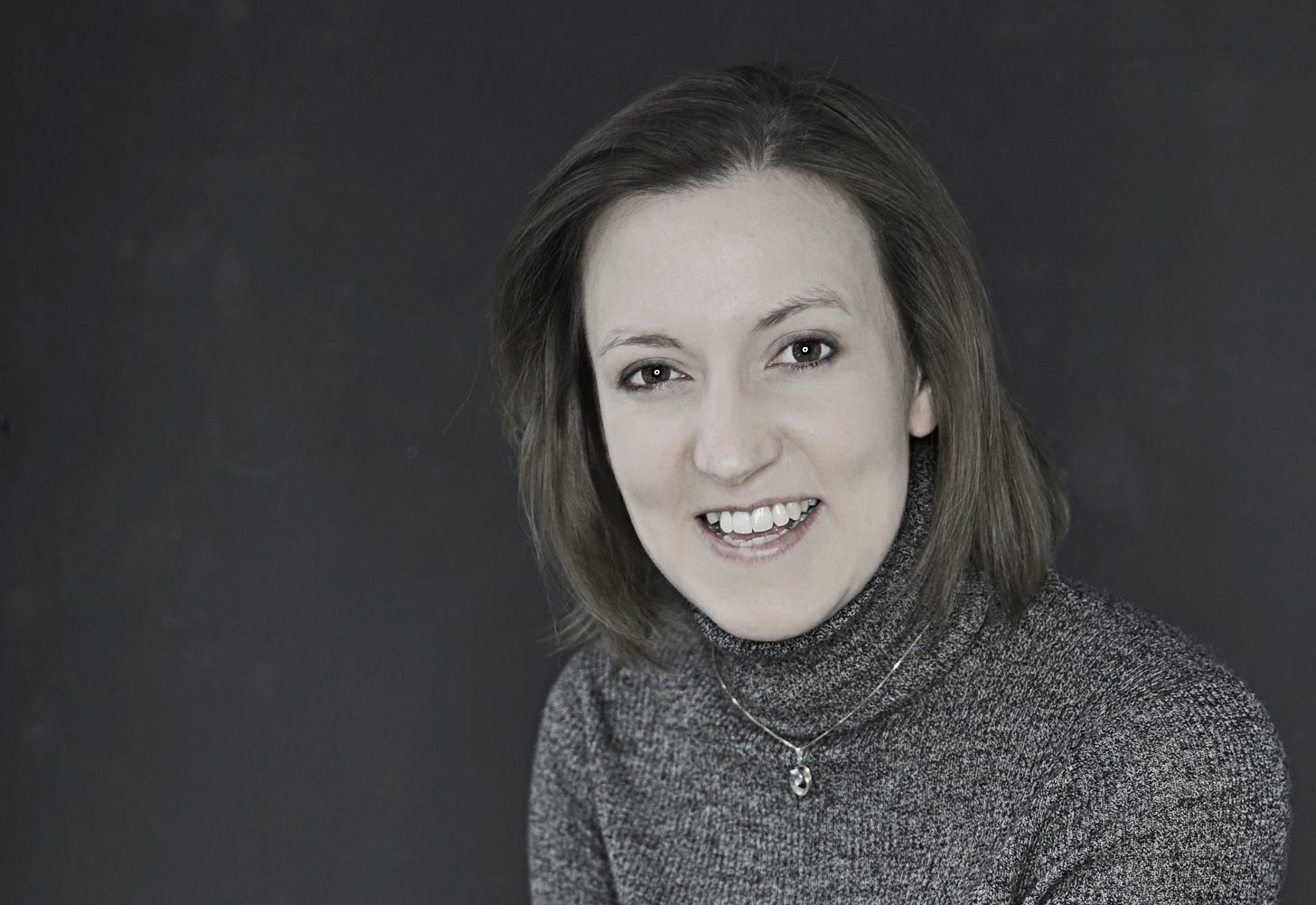This week’s podcast is an excerpt from Third Factor Magazine, with permission to reprint.
An Introduction to Dabrowski’s Levels and Dynamisms
By Jessie Mannisto
One of the great things about Kazimierz Dabrowski’s theory of positive disintegration (TPD) is that though it is essentially about growth, it doesn’t stop when childhood ends. TPD charts a path through the growth that occurs in adulthood. It’s this path that’s represented in one of the most well-known elements of TPD—the hierarchy of levels. Whenever you read an article at Third Factor (or anywhere else talking about TPD) about one of the levels, ranging from level I to level V, this is what we’re talking about.
But what exactly do those levels represent? In this article, for those of you who are new to the theory, we’ll break down that hierarchy of levels and explain what it means to go through each one. As we do so, we’re also going to explain another concept you’ll hear mentioned in TPD—the dynamisms—because they’re the blocks out of which the levels are built.
A quick preface before we get started: there’s some talk in the academic Dabrowskian community about updating, enriching, and even re-envisioning these levels—particularly levels I and II—based on psychological data that wasn’t available in Dabrowski’s time. We here at Third Factor think that’s important and fascinating, and we hope to explore some of these proposed developments in future articles. For the sake of launching us all from the same starting point, however, this guide will focus on the levels as Dabrowski described them before his death in 1980. Levels III through V, of course, are what interest most of us about the theory, and they seem to be holding up quite well as the science of psychology advances.
Understanding TPD’s Hierarchy of Levels
For those just joining us, let’s review the levels. There are five of them, as follows:
Level I: Primary Integration
Level II: Unilevel Disintegration
Level III: Spontaneous Multilevel Disintegration
Level IV: Directed Multilevel Disintegration
Level V: Secondary Integration
The names are admittedly a bit opaque, but don’t worry; we’ll break each one down shortly. But looking at them all together, you’ll notice that they progress from a state of integration through various forms of disintegration and culminate with reintegration of a higher sort. A positive disintegration, then, is one that gives you the power to climb toward that higher integration, while a negative one leaves you falling back down toward the security of primary integration, or trapped in intense suffering.
Most people do not experience all of these levels in their lifetime. In that sense, they’re not developmental stages, along the lines of Piaget’s theory of childhood cognitive development. Some people seem to be born some distance along the Dabrowskian road, and wherever a person starts, there’s no guarantee that he or she will progress any further.
So what does make a person start climbing up through these levels? Dabrowski called it developmental potential (DP). He listed three things that contribute to a person’s DP: overexcitability, talent/special ability, and that thing called the third factor, after which our magazine is named. The third factor refers to a person’s drive to become his or her best self; or if you prefer, to an active, autonomous conscience. It’s essential to reaching the highest levels in Dabrowski’s hierarchy.
We explain the third factor in a bit more depth here
Based on his work with high-DP clients, Dabrowski posited that people with sufficient DP will generally experience some form of positive disintegration over the course of their lives. Moreover, their disintegrations tended to follow a predictable course, represented particularly by levels III through V in this hierarchy. In that sense, you can look at TPD’s levels as a map of a very long road. And what makes this map so valuable is that it provides way-markers for would-be humanitarians and catalysts who are seeking to forge ahead out of their psychoneuroses* to achieve true mental health, represented by the achievement of their own unique personality ideals at level V. This is a particularly big deal when you realize that the path ahead often stands opposed to turning back to the earlier, more comfortable levels—which is precisely what a lot of people will be urging them to do.
*Modern psychologists no longer speak of “psychoneuroses,” but Dabrowski made frequent use of the term. Here’s how it’s defined in the glossary of his 1972 book, Psychoneurosis Is Not an Illness:
PSYCHONEUROSIS. A more or less organized form of growth through positive disintegration. Lower psychoneuroses are predominantly psychosomatic in nature, higher psychoneuroses are highly conscious internal struggles whose tensions and frustrations are not anymore translated into somatic disorders.
Suffice it to say, other psychologists and psychiatrists did tend to see the psychosomatic symptoms as representative of an illness. And even if Dabrowski said otherwise, he still wanted to help his patients get to the higher level ones, where the physical symptoms of distress, tension, depression, and anxiety would no longer plague them.
Enter the Dynamisms
This brings us back to the dynamisms, which are one of the least discussed but most important elements in TPD. Dynamisms are forces inside you that propel you to grow by disintegrating the way your present personality is structured and reintegrating it at a higher level, from a well-adjusted (i.e., highly integrated) but unhealthy personality (level I), through one that’s maladjusted, psychoneurotic, and disintegrating (levels II-III), to one that is reintegrated in a stronger, healthier form (levels IV-V)—one that is simultaneously more authentic and more pro-social.
With us so far? Great! Now we’re ready to explore each level…
Continue to read on Third Factor Magazine.
In the Hold my Drink — navigating culture with a chaser of civility, and Counterweight podcast, Episode 55, we speak with Jessie Mannisto, the Editor of Third Factor Magazine. Jessie’s passion is exploring Dabrowski’s Theory of Positive Disintegration. TPD sees psychological tension or disintegration as necessary for growth, the development of courage, and ultimately, to realizing our fullest potential. Becoming positively maladjusted can be painful but the resulting authenticity and agency, so desperately needed in our world, are important not only for us individually but also as a community. All discussed with a chaser of civility, of course, and just another pinot noir.
Hold my Drink welcomes all people with all kinds of beverages to join us as we explore the truths of a chaotic and beautiful world, together.
Find us on Apple Podcasts and Spotify, or watch the conversation unfold on YouTube, and follow us on Facebook, Twitter and Instagram.
What Jessie is Reading:
You Learn By Living: Eleven Keys for a More Fulfilling Life, Eleanor Roosevelt
The Box: How the Shipping Container Made the World Smaller and the World Economy Bigger, Marc Levinson
And listening to:
Gender: A Wider Lens, Sasha Ayad and Stella O'Malley
Wine for Normal People Elizabeth Schneider
What Jen is Reading:
The Creative Intelligence Agency, Third Factor Magazine, Jessie Mannisto
The Neurodiversity Case for Free Speech, Quillette, Geoffrey Miller
And listening to:
How the Heck are we Gonna Get Along? | Irshad Manji, Politicon Podcast with Clay Aiken
Agreeable Jews, Adventures with Dead Jews Podcast with Dara Horn
Jessie Mannisto has worn many professional hats, including that of leadership analyst for the Central Intelligence Agency, where she wrote psychobiographic assessments of foreign leaders for US policymakers. In 2011, she was the Google Policy Fellow at the American Library Association, where she analyzed digital technologies’ impact on the quality of our lives and our ability to think deeply. She has also served as the Assistant to the Consul General of Japan in Detroit, as a United States Pavilion Guide at the 2005 World Expo in Japan, and as an English teacher in Japan through the JET Program.
Today, Jessie is self-employed as an editor, researcher, and analyst for private clients who she thinks are doing some good in the world. This allows her the flexibility to run Third Factor, where she writes and edits stories about creative and free-thinking individuals trying to chart their unique paths through the world. She is always eager to understand why people think what they do, even (or especially!) when she disagrees with them.
A proud native of Detroit, Jessie currently lives in the Washington, DC area. She has a master’s degree in information policy and a graduate certificate in science & technology policy from the University of Michigan. You can engage her on Twitter at @jlmannisto or follow Third Factor at @ThirdFactorMag.
















Ep. 55: Positive Disintegration | Jessie Mannisto